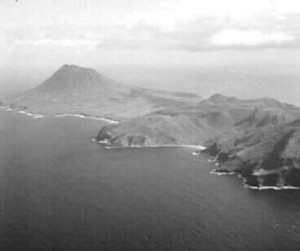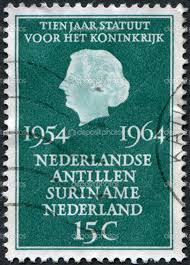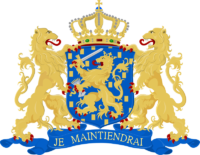Karin Kloosterboer ~ Kind op Bonaire – kinderrechten in Caribisch Nederland
 Sinds 10 oktober 2010 functioneert Bonaire, net als St. Eustatius en Saba, als een bijzondere gemeente van Nederland. Bonaire ligt op circa 80 kilometer afstand van Venezuela en is ongeveer 38 kilometer lang en tussen de 5 en 11 kilometer breed. Volgens schattingen van het Centraal Bureau voor de Statistiek (CBS) van de Nederlandse Antillen had Bonaire 13.389 inwoners in 2010, waarvan 27,8% jonger was dan 20 jaar. De meeste mensen wonen in de hoofdplaats Kralendijk.
Sinds 10 oktober 2010 functioneert Bonaire, net als St. Eustatius en Saba, als een bijzondere gemeente van Nederland. Bonaire ligt op circa 80 kilometer afstand van Venezuela en is ongeveer 38 kilometer lang en tussen de 5 en 11 kilometer breed. Volgens schattingen van het Centraal Bureau voor de Statistiek (CBS) van de Nederlandse Antillen had Bonaire 13.389 inwoners in 2010, waarvan 27,8% jonger was dan 20 jaar. De meeste mensen wonen in de hoofdplaats Kralendijk.
Dit onderzoek brengt voor het eerst alle aspecten van het leven van kinderen in Caribisch Nederland in beeld. Kind op Bonaire schetst de samenhang tussen de verschillende factoren: de gezinssituatie, het onderwijs, gezondheid en gezondheidszorg, veiligheid, vrijetijdsbesteding, participatie, de leefomgeving en de financiële situatie.
Download hier het rapport (PDF): http://www.kindmetrecht.nl/kind_op_bonaire.pdf
Lammert de Jong ~ De last van de Caribische delen van het Koninkrijk der Nederlanden
Samen met de Caribische delen van het Koninkrijk blijft Nederland werken aan een goede toekomst, aldus de Koning op Prinsjesdag 2015. Wie zou deze veelbelovende doch nietszeggende passage hebben bedacht? Werken aan een goede toekomst vereist veel meer inspanning dan Nederland bereid is in te zetten voor reguliere ondersteuning van de landsdelen. De resolute steun voor rechtshandhaving, ingegeven door een Nederlands belang, steekt schril af tegen de inertie met betrekking tot de ondermaatse kwaliteit van het onderwijs in de landsdelen. Falend onderwijs heeft gevolgen voor burgerschap en de rechtsstaat. Ook op dat terrein zou Nederland moeten werken aan een goede toekomst. Daarentegen worden de Caribische landen door Nederland ervaren als een last, niet als een opdracht. Maar al te graag zou Nederland het tegenwoordig zonder deze gewesten willen doen. In spiegelbeeld geldt dit ook voor de Caribische delen van het Koninkrijk. Over en weer domineert kommer en kwel in plaats van de ambitie er samen het beste van te maken. Koninkrijksrelaties draaien rond de ondersteuning die Nederland de landen biedt, zolang zij daar gebruik van willen maken (Hillebrink). Wie het beter weet, mag het zeggen.
Lees verder: http://www.comitekoninkrijksrelaties.org/de-last-van-de-caribische-delen
NosTV Bonaire ~ Ruben Severina ~ “Papiamentu Na Boneiru”
The Kingdom Of The Netherlands In The Caribbean: 1954-2004. What Next?
– Preface (see below)
– Ernst M.H. Hirsch Ballin ~ Introduction
– Lammert de Jong ~ Repairing a not so united Kingdom. Can it be done?
– Denicio Brison ~ The Kingdom’s Charter (Het Statuut): Fifty years in the wilderness
– Francio Guadeloupe ~ The Politics of Autochthony and Economic Globalization: seamy sides of the same coin
– Denicio Brison – In reaction to Francio Guadeloupe
– Francio Guadeloupe ~ The need for a critical imagination. In reaction to comments by Denicio Brison
– Mito Croes ~ De ‘reinvention’ van het Koninkrijk
– Douwe Boersema ~ 50 jaar Statuut en verder
– Steven Hillebrink ~ Constitutional In-Betweenity: Reforming the Kingdom of the Netherlands in the Caribbean
– Dirk Kruijt & Wim Hoogbergen ~ Suriname 1954-2004. Kroniek van een illusie
– About the authors
Preface
This book contains a selection of treatises on the Kingdom of the Netherlands in the Caribbean, 1954-2004. The Netherlands Antilles and Aruba are part of the Kingdom of the Netherlands. The constitution of the Kingdom, Het Statuut (the Kingdom Charter), was formalized in 1954.
In anticipation of the 50th anniversary of the Charter for the Kingdom on 15th December 2004, a conference, workshops and a series of lectures were held in the Netherlands Antilles. On Sint Maarten, the Island government initiated a conference (22 October 2004), which also included representatives of neighboring islands (St. Kitts and Nevis, Anguilla, French St. Martin), to be followed, the next day, by workshops organized by the University of St. Martin. On Curaçao, the University of the Netherlands Antilles arranged a series of lectures for the general public in November and December 2005.
Most of the book is in English, part is in Dutch. This is a reflection of the language practice in the Kingdom of the Netherlands. On Sint Maarten the lingua franca is English. On Curaçao, a Dutch speaking national may lecture in Dutch, though a presentation in Papiamento would certainly add to the speaker’s standing. Notwithstanding, all lectures on Curaçao were in Dutch. The chapter on Suriname has been included in order to present a more complete picture of the Charter’s 50 years history.
The authors present a medley of interests in the Kingdom of the Netherlands: young scholars, seasoned academics, a former Aruban minister-plenipotentiary in the Netherlands and a former Dutch resident- representative in the Netherlands Antilles. The book’s Introduction is by Ernst M.H. Hirsch Ballin, a former minister of Kingdom Affairs and presently a member of the Council of State of the Kingdom. For many years he has maintained a deep-rooted and well documented interest in the Kingdom of the Netherlands in the Caribbean.
The book’s cover shows a picture of a statue of a black Caribbean woman wrapped in the colors of the Kingdom of the Netherlands.[i] We had some doubts about this choice of cover. Could it be labeled as frivolous, irreverent or missing the point? One of the authors convinced us that this statue reflects:
(…) that the Kingdom has been multi-ethnic for centuries; that people of all color have been part of Orange; and that this awareness is growing. This statue is gender sensitive by indicating the role women in colonial dress and head wrap have played in critically translating the Netherlands dominance so that Antilleans and Arubans while being victimized, did not see themselves as victims of history.
The statue symbolizes a new concept of the Kingdom of the Netherlands, and at the same time it explicates that since colonial times the borders of the Kingdom extend far beyond the North Sea. (Francio Guadeloupe)
With vigor and pleasure we have put this book together. Most of us knew each other in cyberspace only; some met for the first time in ‘hard copy’ on Curaçao and Sint Maarten. Very likely new bonds of scholarship have been fastened for the days to come. This book would not have seen the light without the 50-year Charter initiatives of the Island government of Sint Maarten (Sarah Wescot-Williams, Dennis Pantophlet, Dorothy Lake), the University of St. Martin (Josianna Fleming-Artsen, Maria van Enckevort) and the University of the Netherlands Antilles (Miguel Goede and Douwe Boersema). We and our readers owe them much appreciation. Only insiders know how hard it was to find the money to realize these initiatives. Auke van der Berg, Rozenberg Publishers, agreed to run the press again by stating: the future of the Kingdom is our niche.” So be it.
Lammert de Jong
Amsterdam, April 2005
NOOT
i. This statue was a complimentary present to friendly relations of a political party (C 93) on Curaçao that aimed to integrate the Netherlands Antilles as part of the Netherlands. Many years ago I had to honor to be invited on a Sunday morning on Curaçao to speak about various options of Kingdom relations and have since treasured this statue on one of the Caribbean bookshelves in my study. This party did not achieve this goal and the gist of this book does not deal with this option.
Rozenberg Publishers ~ ISBN 978 90 5170 195 1 – 2005
OVT – VPRO ~ Het spoor terug, de koloniale kater St. Eustatius
 Sint Eustatius was de belangrijkste doorvoer- en handelshaven van de West Indische Compagnie. Het eiland werd in de achttiende eeuw ook wel de Gouden Rots genoemd. Het was verreweg het rijkste koloniale bezit in de west en via Sint Eustatius hielp Nederland de Amerikanen in 1776 met hun oorlog tegen de Engelsen. Een Amerikaans schip werd er zelfs begroet met elf saluutschoten, die door Amerika prompt werden geïnterpreteerd als de eerste erkenning van hun onafhankelijkheid.
Sint Eustatius was de belangrijkste doorvoer- en handelshaven van de West Indische Compagnie. Het eiland werd in de achttiende eeuw ook wel de Gouden Rots genoemd. Het was verreweg het rijkste koloniale bezit in de west en via Sint Eustatius hielp Nederland de Amerikanen in 1776 met hun oorlog tegen de Engelsen. Een Amerikaans schip werd er zelfs begroet met elf saluutschoten, die door Amerika prompt werden geïnterpreteerd als de eerste erkenning van hun onafhankelijkheid.
Maar hoe kijken de Sint Eustatianen aan tegen hun fiere koloniale verleden. Pieter-Bas van Wiechen ging naar het eiland en maakte de documentaire ‘De koloniale kater van Sint Eustatius’.
Luister: http://m.radio1.nl/Eustatius.html
The Kingdom Of The Netherlands In The Caribbean ~ Introduction
 This book occupies a special place among the numerous publications and events marking the 50th anniversary of the Charter for the Kingdom of the Netherlands. It is critical, steers clear of platitudes, and opens up new prospects: rather than losing themselves in reminiscences, the writers set out to define the tasks that lie ahead. Repairing the Kingdom, globalization, imagination, reforming and reinventing the Kingdom of the Netherlands – those are the watchwords – linking the contributions to this book. Without losing sight of historical realities (including the distressing fortunes of Suriname) the writers are more concerned – strikingly so – with the future. And they naturally avoid fixing their gaze narrowly on the islands themselves; instead, they take in the ocean that washes their shores, as it were – an ocean that links them to continents near and far and that has in a sense given the Caribbean island communities their open identity. Any comparison of the relative prosperity and well-being of the islands in the Caribbean demonstrates that those in a constitutional relationship with a larger country overseas are doing far better than the independent island states.
This book occupies a special place among the numerous publications and events marking the 50th anniversary of the Charter for the Kingdom of the Netherlands. It is critical, steers clear of platitudes, and opens up new prospects: rather than losing themselves in reminiscences, the writers set out to define the tasks that lie ahead. Repairing the Kingdom, globalization, imagination, reforming and reinventing the Kingdom of the Netherlands – those are the watchwords – linking the contributions to this book. Without losing sight of historical realities (including the distressing fortunes of Suriname) the writers are more concerned – strikingly so – with the future. And they naturally avoid fixing their gaze narrowly on the islands themselves; instead, they take in the ocean that washes their shores, as it were – an ocean that links them to continents near and far and that has in a sense given the Caribbean island communities their open identity. Any comparison of the relative prosperity and well-being of the islands in the Caribbean demonstrates that those in a constitutional relationship with a larger country overseas are doing far better than the independent island states.
Autonomy as watchword
Even so, during the period in which the Kingdom Charter came into being, the primary aim was to maximize the autonomy of the Netherlands Antilles and of Suriname – which at that point had yet to achieve independence. Until 1955 the Kingdom of the Netherlands found itself under heavy pressure in the United Nations to comply with its obligation to decolonize. At the end of that year, exactly twelve months after the signing of the Charter, the Kingdom’s reporting obligation was lifted, in recognition of the decolonization of Suriname and the Netherlands Antilles.[i] In this context, it makes perfect sense that the Charter was seen first and foremost as a document enshrining the autonomy of these territories. The enumeration of Kingdom affairs was construed as exhaustive, although scope was created for adding policy areas in mutual agreement, and for regulating certain matters jointly in Kingdom acts. The Charter also provides a broad framework for statutory or voluntary cooperation in arranging matters that, in principle, fall within the scope of the autonomy of the three countries of the Kingdom. This made the Kingdom of the Netherlands into an asymmetrical federal state, one of whose constituent parts or ‘countries’ – the Netherlands – accounted, and still accounts for the vast majority of the Kingdom’s population, its economic potential, and its institutional structure. In spite of this disparity, the equality of the Netherlands Antilles, Suriname (until 1975) and Aruba (since 1986) as other countries of this Kingdom is engraved in stone in the Charter.
A changed world
Fifty years on, the Charter remains almost unchanged but the world about it has been transformed. A world of separate national societies divided by heavily guarded borders in which independence was cherished as the highest ideal has given way to an acknowledged interdependence among states, from the largest to the smallest. This new pattern of international relations is still evolving. The old system of sovereign states as the supreme political structures ‘cannot cope’ with numerous transnational problems, some concerning garden-variety crimes (transnational mafias and cybercrime) and many concerning non-security related issues (environmental degradation and pandemics that know no borders).[ii] But new modes of international governance are still in development.
One of the most noteworthy changes is in the relationship between people and the multiplicity of dimensions of their everyday world. The formation of nation states was the result of a process of demarcation that involved not just the state and its laws but also the people subject to them. The 1950s witnessed, on the one hand, the formation of national states taking the place of colonial administration, and on the other, the first efforts to transcend states – preoccupation with borders which was often rooted in hostility – for instance, the founding of the European Communities.[iii] The Charter exhibits traces of both these trends: on the one hand, the autonomy it grants to the overseas territories appears to be a giant leap towards independence; on the other hand, the decision to link the three countries in an enduring confederation indicates that separatism is not necessarily the overriding force. A year before the Charter’s adoption, the Dutch Constitution had been amended to permit the transfer of certain powers to international agencies and to accord priority to applicable legal norms originating in the international arena. Read more





